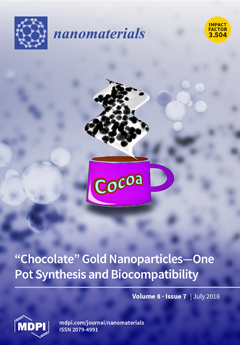The grain size of CVD (Chemical Vapor Deposition) graphene was controlled by changing the precursor gas flow rates, operation temperature, and chamber pressure. Graphene of average grain sizes of 4.1 µm, 2.2 µm, and 0.5 µm was synthesized in high quality and full
[...] Read more.
The grain size of CVD (Chemical Vapor Deposition) graphene was controlled by changing the precursor gas flow rates, operation temperature, and chamber pressure. Graphene of average grain sizes of 4.1 µm, 2.2 µm, and 0.5 µm was synthesized in high quality and full coverage. The possibility to tailor the thermoelectric conversion characteristics of graphene has been exhibited by examining the grain size effect on the three elementary thermal and electrical properties of
σ,
S, and
k. Electrical conductivity (
σ) and Seebeck coefficients (
S) were measured in a vacuum for supported graphene on SiO
2/Si FET (Field Effect Transistor) substrates so that the charge carrier density could be changed by applying a gate voltage (
). Mobility (
µ) values of 529, 459, and 314 cm
2/V·s for holes and 1042, 745, and 490 cm
2/V·s for electrons for the three grain sizes of 4.1 µm, 2.2 µm, and 0.5 µm, respectively, were obtained from the slopes of the measured
σ vs.
graphs. The power factor (PF), the electrical portion of the thermoelectric figure of merit (ZT), decreased by about one half as the grain size was decreased, while the thermal conductivity (
k) decreased by one quarter for the same grain decrease. Finally, the resulting ZT increased more than two times when the grain size was reduced from 4.1 µm to 0.5 µm.
Full article






